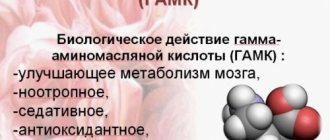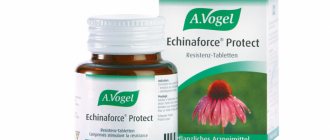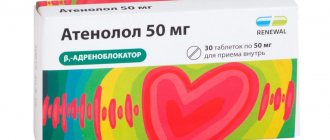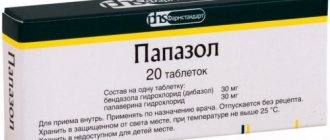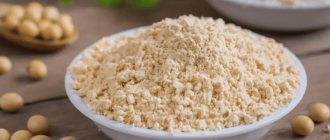pharmachologic effect
Venous vasodilator, has an antianginal effect. Stimulates the formation of nitric oxide in the vascular wall, which is an endothelial relaxing factor. Reduces preload (dilatation of peripheral veins and reduction of blood flow to the right atrium) and afterload, total peripheral vascular resistance (TPVR) on the heart; reduces myocardial oxygen demand.
Restores blood flow through small endocardial vessels, improves blood flow in the epicardial coronary arteries, increases exercise tolerance in patients with coronary heart disease (CHD), angina pectoris.
In heart failure, it helps to unload the myocardium by reducing preload. Reduces pressure in the pulmonary circulation.
Compared to nitroglycerin, it has a slower but longer-lasting effect (up to 10 hours). When taken orally, the onset of effect is after 30 - 45 minutes (with sublingual administration - after 15 - 20 minutes), duration - 4 - 5 hours.
Erinite
The domestic drug erinite is a peripheral vasodilator, dilating mainly the vessels of the venous bed. Pentaerythrityl tetranitrate is used as the active ingredient in erinite. The drug also has an antianginal (anti-ischemic) effect. The pharmacological effect of erinite is due to a decrease in preload and afterload on the heart, which is achieved as a result of an increase in the lumen of the peripheral veins and a decrease in blood flow to the right atrium in the first case and a decrease in total peripheral vascular resistance in the second. In addition to this, the drug also has a direct coronary dilation effect. Erinite redirects coronary blood flow to areas with insufficient blood supply. In patients suffering from coronary heart disease and angina pectoris, it increases the ability to tolerate physical activity. In case of heart failure, erinite relieves part of the load from the heart muscle and reduces hypertension in the pulmonary circulation. If we compare the drug with nitroglycerin, it “swings” more slowly, but is characterized by a longer action. As you know, nitrates are the main group of antianginal drugs. It should be noted that organic erinite nitrate is significantly inferior in popularity to other nitrates: nigroglycerin, isosorbide dinitrate and isosorbide-5-mononitrate.
The answer to this question lies in the plane of the effectiveness of the pharmacological action: in the doses in which erinite is produced, it cannot be competitive with other drugs in this group.
Erinite is produced in tablet dosage form. When taken orally, it is relatively slowly absorbed from the gastrointestinal tract. The dose of the drug is determined by the doctor individually in each specific case. According to general recommendations, Erinite should be taken 20 mg 3-4 times a day; if necessary, according to indications, the dose can be increased to 40 mg taken 4 times a day or up to 80 mg taken twice a day. Given the slow development of the therapeutic effect, erinite is not intended for use for the purpose of relieving angina symptoms. Cerebral circulatory disorders require a particularly careful approach if it is necessary to use erinite in such patients. The same applies to older people. With prolonged drug therapy using erinite, the therapeutic effect may weaken due to the development of tolerance to the drug. This can be avoided to some extent by reducing the frequency of taking the drug to 1 time per day and additionally taking another antianginal drug. In conclusion, it should be noted that the use of erinite excludes the possibility of consuming alcoholic beverages during the treatment period.
Contraindications
Hypersensitivity, severe arterial hypotension (systolic blood pressure below 90 mm Hg, diastolic blood pressure below 60 mm Hg), collapse, shock, acute myocardial infarction occurring with hypotension, hemorrhagic stroke, traumatic brain injury, angle closure glaucoma, severe liver failure (risk of developing methemoglobinemia), severe renal failure, severe anemia, hypertrophic obstructive cardiomyopathy, constrictive pericarditis, cardiac tamponade, severe aortic and/or mitral valve stenosis, hyperthyroidism, primary pulmonary hypertension (hyperemia of insufficiently ventilated alveolar zones can lead to to hypoxia), chronic heart failure with low left ventricular filling pressure, simultaneous use of phosphodiesterase-5 inhibitors (including sildenafil, vardenafil, tadalafil), lactose and sucrose intolerance, deficiency of sucrase-isomaltase, lactase or glucose-galactose malabsorption, hypersensitivity to the drug and its components, other organic nitrates, age under 18 years (efficacy and safety have not been established).
Carefully
Used for patients prone to arterial hypotension in elderly and dehydrated patients; with a history of orthostatic hypotension.
Use during pregnancy and breastfeeding
The use of the drug during pregnancy and lactation is contraindicated.
Drug indications and contraindications
The main indication for use of the drug is chronic coronary insufficiency. This condition occurs if the myocardium’s need for oxygen and nutrients does not correspond to the volume of their delivery through the arterial vessels. It is against the background of such pathology that coronary disease develops - IHD.
The drug is indicated for frequent attacks of angina pectoris, or angina - pain in the chest, behind the breastbone.
Indications also include the prevention of exacerbations of coronary artery disease in the form of painful attacks. Also, the use of the drug is justified after a heart attack to prevent its recurrence in the late recovery period.
Erinit is usually used in combination therapy; as a single drug it is used only in the early stages of cardiac pathologies. The medicine is also recommended to be taken together with other medications for chronic heart failure. Here are the main contraindications for therapy:
- early period after a heart attack, or developing heart attack;
- acute conditions - shock, collapse, traumatic brain injury, hemorrhagic stroke, other types of acute cerebral disorders;
- increased intracranial pressure;
- low blood pressure;
- high intraocular pressure, already diagnosed angle-closure glaucoma;
- intolerance to nitrates or this particular active substance.
The medicine is not prescribed to people under the age of 18 - no studies have been conducted on its effect on the child’s body.
special instructions
When taken, the risk of developing arterial hypotension increases in elderly patients and dehydrated patients.
It is necessary to exclude alcohol consumption during treatment.
With prolonged use, the therapeutic effect may decrease (due to the development of tolerance). To reduce the risk of developing tolerance, it is recommended to observe a “nitrate-free” period (8 - 12 hours).
When using the drug once a day in combination with other antianginal drugs, the risk of developing tolerance is less.
The drug is not used to relieve angina attacks. Do not suddenly interrupt treatment with the drug.
Due to the fact that when using the drug, side effects such as dizziness, drowsiness and blurred vision may occur, it is therefore necessary to refrain from driving vehicles and engaging in potentially hazardous activities that require increased concentration and rapid mental and motor reactions.
Directions for use and doses
Erinit is taken orally (1 hour before meals) in the form of tablets of 10 - 20 mg (1 - 2 tablets) 3 - 4 times a day, if necessary - up to 40 mg 4 times a day, it is acceptable to prescribe 80 mg 2 times a day day.
To prevent nocturnal attacks of angina pectoris, 20 mg is prescribed before bedtime. The course of treatment usually lasts 2 - 4 weeks. A repeated course is prescribed with breaks, the duration of which depends on the course of the disease.
If necessary, sublingual administration of the drug is possible, but not to relieve an attack of angina.
Instructions for the drug
This medicine continues to work for about 10 hours. After oral administration, the therapeutic effect begins within 30-45 minutes, when absorbed under the tongue - after just 15 minutes. Therefore, during attacks of angina, it is recommended to use the drug sublingually.
Dosing recommendations are as follows:
- take 20 mg three times/four times a day;
- it is allowed to increase the dose to 40 mg four times, 80 mg twice a day;
- take similar doses of Erinite sublingually.
The dose is taken before meals, about an hour. Erinit is often combined in therapy with beta blockers and calcium channel blockers. In this case, the dosage is reduced, usually 20-40 mg is taken once. The course will last up to a month, it can be repeated after a break indicated by the doctor.
The medicine should not be taken simultaneously with alcohol. The latter dilates the blood vessels, then leads to their sharp narrowing. Also, when taken together, there is a risk of a serious decrease in blood pressure. At least 10 hours should pass between taking the product and consuming alcohol.
Side effect
Allergic reactions, skin flushing, headache, tinnitus, dizziness, nausea, weakness, tachycardia, increased fatigue, anxiety, increased sweating, decreased blood pressure (BP), orthostatic hypotension; sometimes there is a disorder of intestinal function (diarrhea). When the dose is reduced or after stopping the drug, side effects disappear.
Overdose
When using the drug in large doses, tolerance may develop.
Symptoms: orthostatic hypotension, a feeling of compression of the head, throbbing headache, severe sweating, cold skin, covered with sticky sweat, or hyperemic, palpitations, bradycardia, conduction disturbances (blockade), difficulty breathing, Kussmaul breathing, bloody diarrhea, vomiting, dizziness, confusion, syncope, coma, fever, paralysis, visual impairment.
Treatment: gastric lavage, giving a horizontal position with legs raised, in case of severe arterial hypotension and/or in patients in shock - administration of fluid intravenous drip infusion solutions, monitoring the level of methemoglobin in the blood, if it increases - prescribing ascorbic acid in a dose 1 g orally, methylthioninium chloride (Methylene blue) IV up to 50 ml of 1% solution, toluidine blue - 2 - 4 mg/kg body weight IV quickly, if necessary - again at a dose of 2 mg/kg with an interval of 1 hour , oxygen therapy, hemodialysis, exchange transfusion.
Interaction with other drugs
If you are taking this drug with other medications at the same time, consult your doctor.
Under the influence of dihydroergotamine, the antianginal effect of erinitis may be reduced. The combination of these means is considered irrational.
It is possible to enhance the hypotensive effect when used simultaneously with vasodilators and antihypertensive drugs (beta-blockers, calcium channel blockers, etc.), antipsychotics, tricyclic antidepressants, monoamine oxidase inhibitors, procainamide, ethanol, phosphodiesterase-5 inhibitors.
The combination with anaprilin is rational, since the antianginal effect is enhanced.
